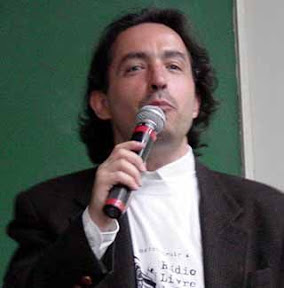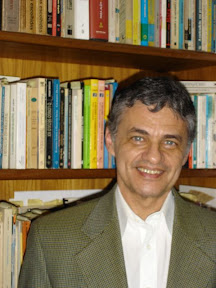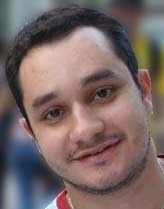Effective Open Source
Por Oriana Persico e Salvatore Iaconesi
FreeSoftware (and everything “free” in philosophy, meaning free from patents, licenses, copyrights..) can be considered as an enabling tool that can be used to obtain know-how on accessible technologies. In this role it is mainly used to produce multimedia content and to produce/provide immaterial production and services.The production of media, together with the possibility for a potentially free mass distribution, can bear various meanings: as an example, it could prove a fundamental tool used to document the heritages of marginal communities (economically, culturally, anthropologically, or even at the risk of extinction) by leveraging the advantages coming from the availability of a public space that is truly accessible1.
On the other hand, the production of services and skills allows for the creation and collection of sources of economic sustainment.
But the FreeSoftware-based approach remains a partial one and it does not represent a complete solution to the real problems created by the existence of cultural diversities: the definitions of integrability and of the processes for integration.
It's not possible to talk in terms that are exclusively technological.
The process of integrating heterogeneous communities allows for a loss, expressed in terms of ecology, of anthropological contamination and, in extreme cases, of a real invasion of the traditions and heritages, determined in most cases by the application of the necessary2 elements of standardization (a simple example is the use of the English language; another one is the use of systems and interfaces that are standardized, be them in New York or in the middle of the Amazon forest).
As an integration tool technology is used to define standard spaces for all of the typologies of actors wanting to join in.
Multimedia production systems effectively allow for the publication of contents to a space that is really public. Contents that can document and explain the identity of the communities. These opportunities have produced effects that are evident, but limited in scope: the contents remained in their niche and they only seldom created the conditions for a change in the living conditions of their subjects and producers, due to the lack of notoriety and power; even more, the awesome power created by the diffusion of multimedia contents (just think of Rodney King's case), sadly, is not the norm, but the exception.
In the same way, immaterial production remains “the niche”: the majority of musical bands, for example, can freely produce their music, but they aren't able to access a market share that allows for a real dispute against the majors in the promotion of their models and methodologies (when they exist) .
Autonomous production remains in its state of niche phenomenon, while the mass audience remains connected to mainstream culture and content.
Even the Web2.0 exists in this terms. User generated content is truly more significant for the Enterprises providing the services than it is for the single people participating to it3.
Service production behaves in the same way: autonomous production of services is really useful for the support of small commercial activities, but it isn't in the general perception of the mass public, where it remains small in size, without constituting a real alternative.
Software production and commercial networks are perfect examples.
In the first case OpenSource software (if we exclude the few outstanding exceptions) is enabling because it is free, but not for its characteristics in terms of quality and usefulness. This is particularly clear if we analyze the methodologies used to construct the software itself, and the ones created for the software users, to allow for the effective execution of tasks and for the integration of the single users' activities in wider, general processes, such as the ones required for large-scale projects.
In the second case the services produced don't have the size and quality of the larger ones, and the general public happily continues to use mainstream services, “cuddled” and spoiled by the corporate service providers, who are the only ones able to create evolved and sophisticated services.
Coexistence implies integration?
Coexistence aims to the definition of spaces for existence that allow for each other's presence in an unique space/system. It aims to the absence-of-loss in identity.
Integration aims to the sharing of a space/system and, thus, to the creation of a unique space for existence. It aims to a convergently “tolerable”4 loss of identity.
On one side OpenSource has created a collaborative modality to approach these problems. On the other side it created a mood of scarce care to the definition and application of structured, effective methodologies, determined by the sharing of the decisional spaces. The integration practices performed with such approaches suffer from the same problems: clear and identifiable results, but far from awesome and limited in share, at the price of a “tolerable” loss in identity.
This could already represent an useful feedback to define the necessity for a sharp turn in the techniques used to approach integration issues, for the need to use formal and structured methodologies, for the need to use any useful technology, aiming toward coexistence.
Methodologies and technology must be analyzed from points of view that are social/anthropological and process-focused:
* socially and anthropologically. This means starting from the complete analysis of the actors, and from the needs of the communities, not from the will/”necessity” to create integration spaces5.
* focusing on the processes. This means to create methodologies. Using the previous considerations as a foundation, creating techniques that are formal, applicable and non-invasive. Formal: scientifically described, to be able to systematically monitor their effectiveness. Applicable: they need to be useful (fulfilling the auto-defined expectations of the communities - their real needs6 - ) and context-effective. Non-invasive: they must support and preserve communities'7 own identity and processes, without enforcing external models.8.
The next step is the analysis of integrability: to understand what is actually integrable and what isn't, in society and technology. The process is defined by establishing a feedback network between various types of skills and know-hows (anthropology, sociology, system theory, networks, computing, ecology... as it is explained in the practical example referenced in note 8). It starts from the analysis of reality to build interaction models for communities and resources, using the results of a formal analysis. The models produced must be expressive enough to describe the coexistence conditions for the communities, accessing any available and useful technology and methodology.
Logistic and financial issues must be overcome by the action of governments. Ideological issues must be overcome by competency.
1Technology is truly accessible only in its simplest forms: even publishing content on the internet is not an universally accessible activity, as only a part of the population possesses the necessary know-how
2We're discussing about the preservation of cultural identities: the definition of “standards” is a truly delicate subject. Even the definition of the data model of a system determines the possibility/impossibility for a realistic representation of the coexistence of diversities.
3No single user has ever been bought for 16Billion dollars :)
4The engineering term “tolerable” exposes the existence of a cost-benefits analysis on the models. Such practices are common in the execution of studies of the economic feasibility of projects. We necessarily need to decide the extent to which such analysis techniques are applicable to approach (and, eventually, resolve) cultural integration issues.
5This is a language problem. There is a clear intent in the need to declare the will to approach integration actions by following a specific methodology: the need to acquire specific parts of public consensus. Governments' real power to enact has produced, up to now, very few actions that are truly significant .
6 A clear example for this concept is the identification of the universal availability of broadband connectivity with the first step towards freedom.
7The concept of autonomy is, too often, interpreted as the absence of intermediaries. This is not true in general: intermediaries can prove to be effective tools for the preservation of cultural identities.
8For example the role of an intermediary, when correctly defined, can be a powerful tool to sustain marginal communities, without invading their ways of life.
At
http://www.beyourbrowser.com/public/ipotesi-per-assurdo/
you will find a project design that includes such an opportunity: the creation of an eco-logically integrated multinational.
In the example, profit is defined in a peculiarly interesting way, integrating the financial health of the multinational with the social/anthropological health of the communities that it coordinates.









Nenhum comentário:
Postar um comentário